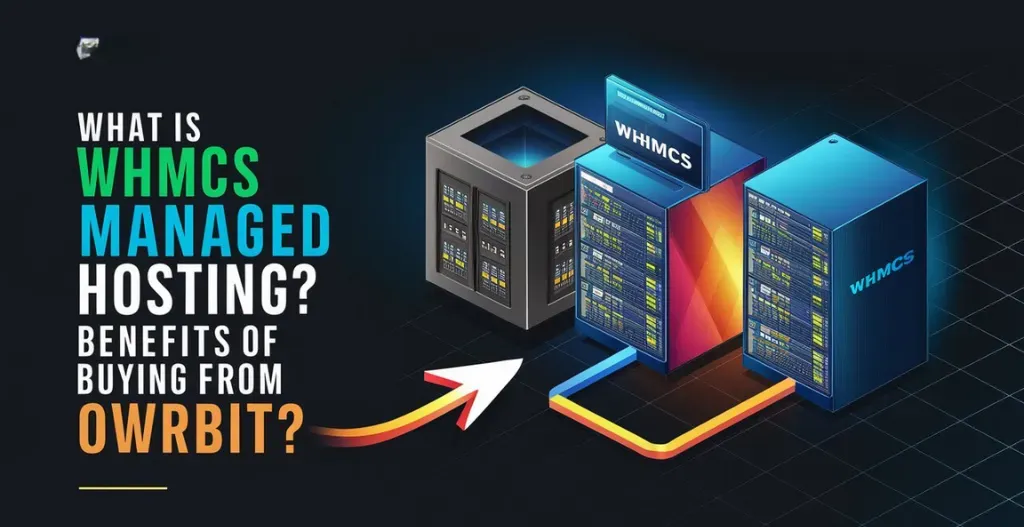India has become one of the fastest-growing eCommerce markets in the recent times, More and more people are continuously using the internet that means more mobile phone users, and a growing middle class with more money to spend. Ever thought about starting your own online business, It’s a great time to do so. This beginner’s guide will help you get started with eCommerce business, whether you want to sell handmade items, clothing, or digital products.
Starting an eCommerce business might seem to be difficult, but with the right advice, strategy, plan and approach, you can make your way through this exciting market. You’ll need to find your niche, do market research, set up your online store, and use effective marketing strategies. These steps are important for building a successful business. Additionally, learning about the legal requirements, payment methods, and shipping options will help you make smart decisions that will lead to growth.

Introduction to eCommerce Business :
eCommerce (electronic commerce), is the new process for buying and selling of goods and services over the internet. It has completely transformed the way businesses operates and manages their products, making it easier for anyone to start and run a business from anywhere in the world. With an eCommerce business, you can reach a global audience, operate 24/7, and offer a wide range of products or services without the need for a physical storefront.
In recent years, the eCommerce industry has seen rapid a growth, driven by advancements in technology, increasing people in internet access, and changing consumer behavior. More people are shopping online than ever before, making eCommerce a lucrative opportunity for entrepreneurs. Whether you’re selling physical products, digital goods, or services, starting an eCommerce business allows you to tap into this growing market.
However, starting an eCommerce business also comes with its challenges. Competition is fierce, and standing out in a crowded market requires careful planning, strategic marketing, and a deep understanding of your target audience. Additionally, you need to navigate the complexities of logistics, payment processing, and customer service to build a successful and sustainable eCommerce Business.
Overall, an eCommerce business offers exciting opportunities for growth and success, especially in today’s digital age. With the right approach and a clear understanding of the essentials, you can turn your business idea into a thriving online venture.

Why to Start an eCommerce Business in India?
Starting an eCommerce business in India offers several advantages, making it an attractive option for entrepreneurs & startups. Here are some key benefits:
- Rapid Market Growth: India is one of the fastest-growing eCommerce Business globally. With more people getting online and comfortable with digital transactions, the potential customer base is expanding rapidly.
- Widespread Internet Penetration: The increase in affordable smartphones and low data pricing has led to a rise in internet users, especially in urban areas. This growing connectivity allows eCommerce businesses to reach a broader audience across the country.
- Rising Middle Class: India’s middle class is growing, with increasing disposable income. This demographic shift means more people are willing to spend money on a variety of products and services online, creating a robust market for eCommerce businesses.
- Government Support: The Indian government has introduced various initiatives to promote digital transactions and entrepreneurship, such as the Digital India campaign. These initiatives create a favorable environment for eCommerce businesses to thrive.
- Cost-Effective Operations: Compared to traditional brick-and-mortar stores, starting an eCommerce business requires lower upfront investment. There’s no need for a physical storefront, and operational costs like rent and utilities are minimal.
- 24/7 Availability: An eCommerce business can operate around the clock, providing customers with the convenience of shopping whenever they want. This increases the potential for sales and customer satisfaction.
- Wide Product Range: An online store allows you to offer a vast range of products without the space limitations of a physical store. This flexibility enables you to cater to diverse customer needs and preferences.
- Data-Driven Insights: eCommerce platforms provide valuable data on customer behavior, preferences, and sales trends. You can use this data to make informed decisions, improve your product offerings, and optimize your marketing strategies.
- Scalability: An eCommerce business can easily scale up as demand grows. You can start small and gradually expand your product line, target new markets, and increase your operational capacity without significant disruptions.
- Access to Global Markets: With an online store, you’re not limited to local customers. You can reach a global audience, allowing you to explore international markets and increase your eCommerce business’s growth potential.
- Multiple Payment Options: India’s digital payment landscape is evolving rapidly, with various payment gateways and methods available. Offering multiple payment options, including UPI, credit/debit cards, and wallets, enhances the customer experience and boosts sales.
- Lower Marketing Costs: Digital marketing tools like social media, email marketing, and SEO are cost-effective ways to promote your eCommerce business. You can reach a large audience without the high costs associated with traditional advertising methods.
Starting an eCommerce business in India presents an exciting opportunity to tap into a dynamic and growing market. With the right approach, you can leverage these benefits to build a successful online venture.

Key Steps to Start an eCommerce Business:
- Choose Your Niche
- Conduct Market Research
- Create a Business Plan
- Choose an eCommerce Platform
- Register Your Business
- Develop Your eCommerce Website
- Plan Your Logistics and Shipping
- Develop a Marketing Strategy
- Launch Your Store
- Monitor and Optimize

1. Choose Your Niche :
Choosing a niche is a crucial first step when starting your eCommerce business. Your niche is the specific type of products or services you’ll sell. Here’s how to pick the right one:
- Follow Your Interests:
- Think about what you’re passionate about or interested in. Starting a eCommerce Business in an area you enjoy will keep you motivated and make your work more enjoyable.
- Consider Profit Potential:
- Look at how much money you can make in your chosen niche. Some products may be in high demand but offer low profits, while others might have higher profits but sell less often. Find a balance that works for you.
- Use Your Knowledge:
- Choose a niche where you already have some knowledge or experience. Knowing your products well can help you stand out and serve your customers better.
- Find a Unique Angle:
- Look for gaps in the market where you can offer something different or solve a specific problem. Being unique can help you attract more customers.
- Test Your Idea:
- Before fully committing, try selling a small number of products in your chosen niche. See how customers respond and make adjustments based on their feedback.
Selecting the right niche is important for your eCommerce business. Pick something that interests you, has profit potential, and offers a chance to grow.

2. Conducting Market Research For Chosen Niche :
Once you’ve chosen your niche, conducting market research is essential to understand your potential customers and the competition. Here’s a simple guide to help you:
- Identify Your Target Audience:
- Determine who your ideal customers are. Consider their age, gender, location, interests, and spending habits. Knowing your audience will help you tailor your products and marketing strategies to meet their needs.
- Analyze Competitors:
- Research other eCommerce Business in your niche. Look at what they’re offering, their pricing, and their marketing tactics. Understanding your competitors will help you find ways to stand out and identify opportunities for improvement.
- Study Market Trends:
- Look at current trends in your niche. Use tools like Google Trends or industry reports to see what products or services are popular and if there are any emerging trends you can capitalize on.
- Gather Customer Feedback:
- Talk to potential customers to get their opinions. Conduct surveys, interviews, or use social media to gather feedback on what they like or dislike about existing products or services.
- Check Demand and Sales Potential:
- Use online tools and platforms to gauge the demand for your products. Look for search volume data, sales figures, and customer reviews to estimate how well your niche might perform.
- Evaluate Pricing Strategies:
- Research how much customers are willing to pay for similar products. Check competitors’ pricing and consider how you can price your products competitively while maintaining good profit margins.
- Understand Distribution Channels:
- Find out how products are typically sold in your niche. Look at various distribution channels like online marketplaces, direct sales, or retail partnerships to determine the best way to reach your customers.
- Analyze Marketing Opportunities:
- Explore different marketing channels and strategies that are effective in your niche. This might include social media, content marketing, email campaigns, or influencer partnerships.
3. Creating a Business Plan :
A business plan is a roadmap for your eCommerce business. It outlines your goals, strategies, and how you plan to achieve success. Here’s a simple guide to creating your business plan:
- Executive Summary:
- Write a brief overview of your business. Include your business name, what products or services you’ll offer, your target market, and your mission statement. Summarize your business goals and what makes your business unique.
- Business Description:
- Detail what your business is about. Describe your niche, the problem your products or services solve, and your business model (e.g., direct sales, subscription, etc.).
- Market Analysis:
- Provide information on your target market. Include data on customer demographics, market size, and trends. Discuss your competitors and what sets your business apart.
- Organization and Management:
- Outline your business structure. Explain who will manage the business, their roles, and their qualifications. Include details about your team, if applicable.
- Products or Services:
- Describe what you will sell or offer. Include details about your products or services, how they benefit customers, and any unique features. Explain your sourcing, production, or development process.
- Marketing and Sales Strategy:
- Detail how you plan to attract and retain customers. Outline your marketing strategies, such as social media, email marketing, SEO, or paid advertising. Explain your sales tactics and how you’ll convert leads into customers.
- Operational Plan:
- Describe how your business will operate day-to-day. Include information on your supply chain, order fulfillment, shipping, and customer service processes. Explain any technology or tools you’ll use to run your business.
- Financial Plan:
- Provide financial projections for your business. Include estimates for startup costs, operating expenses, revenue forecasts, and profitability. Outline your funding needs and potential sources of funding.
4. Choose an eCommerce Platform :
Selecting the right eCommerce Business platform is crucial for running your online store smoothly. Here’s a simple guide to help you choose the best platform for your business:
- Identify Your Needs:
- Determine what features you need for your online store. Consider factors like product catalog size, payment options, shipping integrations, and any specific functionality required for your business.
- Evaluate Popular Platforms:
- Shopify: Known for its user-friendly interface and robust features. Ideal for beginners and businesses looking for an all-in-one solution.
- WooCommerce: A WordPress plugin that offers flexibility and customization. Best if you already have a WordPress site or want extensive control over your store.
- myDukaan: Suitable for larger businesses with complex needs. Ideal for beginners and businesses looking for an all-in-one solution.
- BigCommerce: Provides a comprehensive set of features and is good for scaling businesses with high sales volume.
- Wix eCommerce: Great for small businesses and beginners, with easy setup and design options.
- Consider Ease of Use:
- Choose a platform that you find easy to use. Consider whether it offers a simple setup process and user-friendly design tools.
- Check Customization Options:
- Look at how much you can customize your store. Ensure the platform allows you to modify the design, layout, and functionality to match your brand.
- Assess Payment and Shipping Integrations:
- Verify that the platform supports various payment gateways and shipping options. Make sure it integrates with the services you plan to use.
- Review Costs:
- Compare the pricing of different platforms. Consider both initial setup costs and ongoing fees. Some platforms charge monthly subscriptions, while others may have transaction fees.
- Test Support and Customer Service:
- Check the level of customer support offered. Look for platforms with good customer service, including live chat, email, or phone support.
- Read Reviews and Compare:
- Look for reviews and comparisons of different platforms to see how other users have experienced them. Pay attention to feedback on performance, reliability, and support.
- Check Scalability:
- Choose a platform that can grow with your business. Ensure it can handle increased traffic, product listings, and sales as your business expands.
- Try Demos and Free Trials:
- Take advantage of demos or free trials to explore the platform’s features and see if it meets your needs. This hands-on experience can help you make a final decision.
5. Register Your eCommerce Business :
Registering your eCommerce Business is a crucial step to legally operate and protect your venture. Here’s a simple guide to help you through the process:
- Choose a Business Structure:
- Sole Proprietorship: Ideal for single-owner businesses. Simple and inexpensive but offers limited liability protection.
- Partnership: For businesses owned by two or more people. It’s easy to set up but each partner shares liability.
- Private Limited Company (Pvt Ltd): Offers limited liability protection and is suitable for growing businesses. It involves more paperwork and compliance.
- Limited Liability Partnership (LLP): Combines elements of partnerships and companies. It provides liability protection while allowing flexibility in management.
- Register Your Business Name:
- Choose a unique name for your eCommerce Business. Ensure it complies with legal naming conventions and is not already in use. Register the name with the relevant authority.
- Obtain a Business License:
- Check if your business requires a specific license or permit to operate. This can vary based on your industry and location. Apply for the necessary licenses through local or regional authorities.
- Apply for an Employer Identification Number (EIN):
- In many countries, you need an EIN or similar tax identification number for tax purposes. This number is used to identify your business to tax authorities.
- Register for Taxes:
- Register your business with tax authorities to ensure you comply with tax regulations. This may include sales tax, income tax, and other local taxes.
- Open a Business Bank Account:
- Separate your personal finances from your business finances by opening a business bank account. This helps with managing your finances and simplifies tax reporting.
- Trademark Your Brand:
- If you have a unique logo, brand name, or slogan, consider registering it as a trademark. This protects your intellectual property and prevents others from using your brand.
- Comply with Local Regulations:
- Ensure you follow any additional local regulations or zoning laws related to running a business in your area.
- Keep Records:
- Maintain accurate and up-to-date records of all your business registrations, licenses, and permits. This helps with compliance and makes managing your business easier.
6. Develop Your eCommerce Website :
Creating a professional and functional eCommerce Business website is essential for attracting and retaining customers. Here’s a simple guide to help you develop your site:
- Choose a Domain Name:
- Select a unique and memorable domain name for your website. Make sure it reflects your eCommerce Business and is easy to spell and remember. Register your domain through a domain registrar.
- Select a Web Hosting Service:
- Choose a reliable web hosting provider to store your website files and make your site accessible online. Look for hosting that offers good performance, security, and customer support.
- Pick an eCommerce Platform:
- Decide on the platform you’ll use to build your store (e.g., Shopify, WooCommerce, Magento). Ensure it meets your needs for product management, payment processing, and customization.
- Get a Website Developer:
- If you’re not comfortable building the eCommerce Business website yourself, consider hiring a professional website developer. They can help you design and develop a custom website tailored to your needs, ensuring a high-quality and functional site.
- Design Your Website:
- Create a visually appealing and user-friendly design. Use professional themes or templates that are responsive (mobile-friendly) and customizable. Ensure your design aligns with your brand identity.
- Set Up Product Listings:
- Add products to your online store. Include high-quality images, detailed descriptions, prices, and any relevant specifications. Organize products into categories to make it easy for customers to find what they’re looking for.
- Implement Payment Gateways:
- Integrate payment gateways to accept online payments. Choose gateways that support various payment methods like credit/debit cards, digital wallets, and bank transfers. Ensure the payment process is secure and easy for customers.
- Configure Shipping Options:
- Set up shipping methods and rates based on your delivery preferences. Offer multiple shipping options (e.g., standard, express) and integrate with shipping carriers if needed.
- Create Essential Pages:
- Include important pages on your site such as:
- Home Page: Your main landing page showcasing key products and promotions.
- About Us: Information about your business and its mission.
- Contact Us: A form or contact details for customer inquiries.
- FAQ: Answers to common customer questions.
- Privacy Policy: Details on how you handle customer data.
- Return Policy: Information on your return and refund policies.
- Include important pages on your site such as:
- Optimize for SEO:
- Improve your site’s visibility on search engines by optimizing it for SEO. Use relevant keywords in product descriptions, meta tags, and URLs. Ensure your site has fast loading times and a mobile-friendly design.
- Test Your Website:
- Before launching, thoroughly test your website. Check for broken links, ensure all forms and payment processes work correctly, and test your site’s performance on different devices and browsers.
- Launch and Promote:
- Once everything is set, launch your website and start promoting it. Use digital marketing strategies like social media, email marketing, and paid ads to drive traffic to your site.
Why to Choose Owrbit For Website Development :
Choosing Owrbit for Website Development comes with several compelling advantages that make it the ideal partner for your online presence:
- Expertise and Experience: Owrbit has a team of skilled professionals with extensive experience in designing and developing websites across various industries. Their expertise ensures that your website will be not only visually appealing but also highly functional and user-friendly.
- Custom Solutions: Owrbit understands that every business is unique, which is why they offer tailored solutions to meet your specific needs. Whether you require a simple informational site or a complex e-commerce platform, Owrbit can create a website that aligns with your business goals.
- Cutting-Edge Technology: Owrbit utilizes the latest web technologies and development practices to ensure your website is modern, fast, and secure. This keeps your business ahead of the curve and provides a seamless experience for your users.
- Responsive Design: With the increasing use of mobile devices, Owrbit ensures that your website is fully responsive, meaning it will look and function perfectly on all screen sizes, from desktops to smartphones.
- SEO-Friendly Development: Owrbit builds websites with advanced search engine optimization (SEO) in mind, helping your site rank higher in search engine results. This increases your visibility and attracts more potential customers to your business.
- Ongoing Support: Owrbit offers 24×7 support and maintenance services to keep your website running smoothly. From regular updates to troubleshooting, their team is always available to assist you.
- Affordable Pricing: Owrbit provides high-quality Website Development services at competitive prices, ensuring you get the best value for your investment without compromising on quality.
- Proven Track Record: Owrbit has a history of delivering successful projects for clients across different sectors. Their portfolio showcases their ability to create websites that drive results.
- Focus on User Experience: Owrbit prioritizes creating websites that offer an exceptional user experience, ensuring that visitors to your site find it easy to navigate and interact with your content.
- Scalability: As your business grows, so should your website. Owrbit builds scalable websites that can evolve with your needs, allowing you to add new features and functionalities as your business expands.
By choosing Owrbit for your Website Development needs, you’re partnering with a team dedicated to helping your business succeed online through a website that reflects your brand, engages your audience, and drives growth.
Types of Website Development Services Provided By Owrbit :
Owrbit offers a diverse range of Website Development to meet various needs. Here’s an overview of the types of website development they provide:
- PHP Website Development: Custom-built websites using PHP to create dynamic, interactive, and robust web applications tailored to your specific requirements.
- WordPress Website Development: Professional WordPress development for creating versatile, user-friendly websites with a range of themes and plugins to enhance functionality.
- eCommerce Website Development: Development of online stores with features designed to manage and sell products efficiently, providing a seamless shopping experience for customers.
- Custom Website Designing: Tailor-made website designs that reflect your brand’s unique identity and meet your specific needs, ensuring a personalized and distinctive online presence.
- Shopify Website Development: Expertise in building and customizing Shopify stores, offering a powerful platform for managing e-commerce businesses with ease.
- WooCommerce Website Development: Integration of WooCommerce with WordPress to create a flexible and scalable online store that suits your business requirements.
- Business Website Development: Development of professional websites designed to represent your business, attract potential clients, and showcase your products or services effectively.
- Personal Website Development: Creation of personal websites, including portfolios, blogs, and personal branding sites, to help individuals establish a strong online presence.
7. Plan Your Logistics and Shipping :
Planning logistics and shipping is essential for ensuring your eCommerce business runs smoothly and delivers products efficiently. Here’s a simple guide to help you plan:
- Define Your Shipping Strategy:
- Shipping Options: Decide on the types of shipping you’ll offer, such as standard, expedited, or same-day delivery. Consider offering free shipping or flat-rate shipping to attract customers.
- Shipping Areas: Determine the geographic areas you’ll ship to, including local, national, or international locations.
- Choose Reliable Shipping Partners:
- Research and select reliable shipping carriers like DHL, FedEx, UPS, or local courier services. Compare their rates, delivery times, and customer service to find the best fit for your business.
- Set Up a Fulfillment Process:
- Inventory Management: Implement a system to track and manage your inventory. This helps ensure you have products in stock and can fulfill orders promptly.
- Order Processing: Establish a process for handling orders from receipt to shipping. This includes picking, packing, and preparing items for delivery.
- Determine Packaging Needs:
- Choose appropriate packaging materials to protect your products during transit. Consider factors like size, weight, and fragility of items when selecting packaging.
- Integrate Shipping Solutions:
- Use eCommerce platforms or third-party tools to automate shipping and tracking. Integration with your online store helps streamline order processing and provides customers with tracking information.
- Calculate Shipping Costs:
- Determine how you will calculate shipping costs. Options include charging based on weight, distance, or offering flat-rate shipping. Make sure to factor these costs into your pricing strategy.
- Establish Return and Exchange Policies:
- Create clear policies for returns and exchanges. Outline how customers can return products, any associated costs, and how refunds or exchanges will be processed.
- Monitor and Optimize Shipping Performance:
- Track shipping performance and customer feedback. Analyze shipping times, costs, and service quality to identify areas for improvement and optimize your logistics process.
- Ensure Compliance with Regulations:
- Be aware of any regulations related to shipping, including customs requirements for international orders. Ensure you comply with legal and regulatory standards to avoid issues.
- Communicate with Customers:
- Keep customers informed about their orders. Provide order confirmation emails, shipping updates, and tracking information to enhance their shopping experience.
Planning your logistics and shipping effectively helps you manage inventory, fulfill orders on time, and provide a positive customer experience. It’s key to running a successful eCommerce business and ensuring customer satisfaction.
8. Develop a Marketing Strategy :
Creating a marketing strategy is crucial for promoting your eCommerce business and attracting customers. Here’s a straightforward guide to help you develop an effective marketing plan:
- Define Your Goals:
- Set clear, measurable marketing goals. These could include increasing website traffic, boosting sales, growing your social media following, or improving brand awareness.
- Identify Your Target Audience:
- Understand who your ideal customers are. Define their demographics, interests, and online behavior. Tailor your marketing efforts to reach and engage this audience effectively.
- Choose Your Marketing Channels:
- Social Media: Use platforms like Facebook, Instagram, Twitter, and LinkedIn to connect with your audience. Create engaging content, run ads, and interact with followers.
- Email Marketing: Build an email list and send newsletters, promotional offers, and personalized recommendations to your subscribers.
- Search Engine Optimization (SEO): Optimize your website content to rank higher in search engine results. Focus on relevant keywords, quality content, and technical SEO.
- Content Marketing: Create valuable content such as blog posts, videos, and infographics to attract and engage your audience. Share this content on your website and social media.
- Paid Advertising: Use pay-per-click (PPC) ads, display ads, or social media ads to drive targeted traffic to your site. Set a budget and monitor ad performance.
- Develop a Content Plan:
- Plan and create content that resonates with your target audience. Develop a content calendar to schedule posts, blog articles, and promotional campaigns.
- Set a Budget:
- Allocate a budget for your marketing activities. Decide how much you will spend on each channel and campaign. Monitor your spending to ensure you stay within budget.
- Create Engaging Offers:
- Develop promotions and special offers to attract customers. Consider discounts, bundle deals, or limited-time offers to encourage purchases.
- Leverage Influencers and Partnerships:
- Collaborate with influencers or other businesses to reach a larger audience. Influencer marketing can help build credibility and drive traffic to your store.
- Monitor and Analyze Performance:
- Track the performance of your marketing campaigns using tools like Google Analytics and social media insights. Measure key metrics such as website traffic, conversion rates, and ROI.
- Adjust and Optimize:
- Based on your performance data, adjust your strategies to improve results. Test different approaches, analyze what works best, and continuously optimize your marketing efforts.
- Engage with Your Audience:
- Interact with your customers through comments, messages, and reviews. Build relationships and gather feedback to improve your products and services.
9. Launch Your Store :
Launching your eCommerce Business store is an exciting milestone. To ensure a successful launch, follow these steps:
- Final Review and Testing:
- Check Functionality: Test your website thoroughly to ensure all features work correctly. This includes checking product pages, shopping carts, payment processing, and shipping calculations.
- Test Mobile Responsiveness: Ensure your site looks and functions well on mobile devices.
- Proofread Content: Review all text for accuracy, including product descriptions, pricing, and contact information.
- Prepare for Launch:
- Create a Launch Plan: Outline your launch activities, including key dates, marketing promotions, and any special events or offers.
- Set Up Analytics: Install and configure tools like Google Analytics to track website traffic, user behavior, and sales performance.
- Announce Your Launch:
- Social Media: Share the news on your social media platforms. Create engaging posts, stories, and ads to generate excitement and drive traffic to your store.
- Email Marketing: Send an announcement to your email list. Include details about your launch, special offers, and a link to your website.
- Press Releases: If applicable, distribute a press release to relevant media outlets and industry publications.
- Offer Launch Promotions:
- Discounts and Deals: Create special launch promotions such as discounts, free shipping, or limited-time offers to attract initial customers.
- Exclusive Offers: Consider offering exclusive deals to your email subscribers or social media followers.
- Monitor the Launch:
- Track Performance: Keep an eye on website traffic, sales, and customer feedback. Use your analytics tools to monitor how well your launch is performing.
- Be Ready for Issues: Be prepared to address any technical issues or customer inquiries promptly.
- Engage with Customers:
- Customer Support: Provide excellent customer support to handle any questions or issues that arise. Be responsive and helpful to build trust with your new customers.
- Collect Feedback: Encourage customers to provide feedback on their shopping experience. Use this information to make improvements.
- Evaluate and Adjust:
- Review Launch Results: Assess the success of your launch based on performance metrics and customer feedback.
- Make Improvements: Identify areas for improvement and adjust your strategies as needed to enhance your store’s performance.
- Plan for Ongoing Marketing:
- Continue Promotion: Keep marketing your store through ongoing campaigns, content creation, and social media engagement.
- Build Relationships: Focus on building long-term relationships with customers through excellent service, loyalty programs, and regular communication.
Launching your eCommerce store involves careful planning and execution. By following these steps, you can ensure a smooth launch and start your business on the path to success.
10. Monitor and Optimize :
Monitoring and optimizing your eCommerce Business store is crucial for improving performance and achieving long-term success. Here’s a simple guide to help you:
- Track Key Metrics:
- Website Traffic: Monitor the number of visitors to your site, their behavior, and where they come from. Use tools like Google Analytics to track these metrics.
- Conversion Rate: Measure how many visitors complete a purchase compared to the total number of visitors. This helps assess how effective your site is at converting visitors into customers.
- Sales Performance: Track your sales figures, including revenue, average order value, and sales by product category.
- Customer Acquisition Costs: Calculate how much it costs to acquire each new customer through various marketing channels.
- Analyze User Behavior:
- Heatmaps: Use heatmap tools to see where users click, scroll, and spend the most time on your site. This helps identify which parts of your site are most engaging or problematic.
- Session Recordings: Review session recordings to understand how users navigate your site and where they encounter issues.
- Review Marketing Performance:
- Campaign Effectiveness: Evaluate the performance of your marketing campaigns, including social media ads, email marketing, and SEO efforts. Measure engagement, click-through rates, and ROI.
- Traffic Sources: Identify which sources of traffic (e.g., organic search, paid ads, social media) are driving the most visitors and conversions.
- Optimize Your Website:
- Improve User Experience: Based on user behavior data, make improvements to site navigation, layout, and design to enhance the shopping experience.
- Speed and Performance: Ensure your website loads quickly and performs well. Optimize images, use caching, and minimize scripts to improve loading times.
- Enhance Product Listings:
- Update Descriptions: Regularly update product descriptions and images to keep them accurate and appealing.
- Manage Inventory: Monitor stock levels and update inventory to prevent out-of-stock situations and ensure timely fulfillment.
- Refine Pricing and Promotions:
- Adjust Pricing: Based on sales data and market trends, adjust pricing strategies to stay competitive and maximize profits.
- Test Promotions: Experiment with different promotions and discounts to see what resonates best with your customers and drives sales.
- Gather and Act on Feedback:
- Customer Reviews: Monitor customer reviews and feedback to identify areas for improvement. Address any issues or complaints promptly.
- Surveys: Use customer surveys to gather insights on their experience and preferences.
- Optimize SEO:
- Keyword Strategy: Regularly update your SEO strategy based on keyword performance and search trends.
- Content Updates: Refresh and add new content to keep your site relevant and improve search engine rankings.
- Monitor Competitors:
- Competitive Analysis: Keep an eye on your competitors’ strategies, promotions, and performance. Use this information to adjust your own approach and stay competitive.
- Regular Reviews and Adjustments:
- Periodic Audits: Conduct regular audits of your website, marketing strategies, and operations to ensure everything is working effectively.
- Continuous Improvement: Implement changes based on your findings and continuously look for opportunities to enhance your store’s performance.
Common Challenges in eCommerce Business and How to Overcome Them :
eCommerce Business often face several challenges. Here are some common ones and strategies to overcome them:
- Traffic Generation: Attracting visitors to your site is crucial.
- Solution: Invest in SEO, content marketing, social media campaigns, and paid advertising. Consider influencer partnerships and collaborations to boost visibility.
- Conversion Rate Optimization: Getting visitors to complete purchases can be challenging.
- Solution: Optimize your website’s user experience with a clear call-to-action, streamlined checkout process, and trust signals. A/B test different elements to see what works best.
- Cart Abandonment: Many customers add items to their cart but don’t complete the purchase.
- Solution: Implement cart abandonment email campaigns, offer incentives like discounts or free shipping, and ensure the checkout process is quick and easy.
- Customer Retention: Keeping customers coming back is essential for long-term success.
- Solution: Use personalized marketing, loyalty programs, and excellent customer service. Regularly engage with customers through newsletters and social media.
- Product Inventory Management: Managing stock levels and preventing overselling or stockouts can be complex.
- Solution: Utilize inventory management software to track stock levels, automate reorder processes, and analyze sales trends.
- Shipping and Fulfillment: Ensuring timely and cost-effective delivery can be challenging.
- Solution: Partner with reliable shipping carriers, offer multiple shipping options, and consider using a fulfillment service to streamline the process.
- Cybersecurity: Protecting your business and customer data from breaches is critical.
- Solution: Invest in robust security measures, including SSL certificates, regular security updates, and payment gateways that comply with PCI-DSS standards.
- Customer Service: Providing effective support is essential for customer satisfaction.
- Solution: Implement a comprehensive customer service system with multiple contact options, such as live chat, email, and phone support. Train your staff to handle inquiries efficiently.
- Mobile Optimization: With increasing mobile traffic, having a mobile-friendly site is crucial.
- Solution: Ensure your website is responsive and provides a seamless experience on all devices. Test your site on various mobile devices to identify and fix issues.
- Competitive Pricing: Staying competitive with pricing can be challenging in a crowded market.
- Solution: Regularly analyze competitors’ pricing strategies and adjust your prices accordingly. Consider offering value-added services or products to differentiate your business.
Addressing these challenges proactively can help you build a successful and resilient ecommerce business.

Conclusion : The Final Verdict
eCommerce has revolutionized the way businesses operate and consumers shop. It offers a vast array of opportunities for entrepreneurs to reach a global audience, operate 24/7, and sell a wide range of products and services.
However, starting and running a successful eCommerce business requires careful planning, strategic execution, and continuous optimization. Key factors to consider include:
- Choosing the right niche: Identify a profitable and sustainable market segment.
- Conducting thorough market research: Understand your target audience, competitors, and market trends.
- Creating a comprehensive business plan: Outline your goals, strategies, and financial projections.
- Selecting the right eCommerce platform: Choose a platform that meets your business needs and is easy to use.
- Registering your business and complying with legal requirements: Ensure you operate legally and protect your venture.
- Developing a professional and user-friendly website: Create a visually appealing and functional online store.
- Planning logistics and shipping: Ensure efficient delivery of products to your customers.
- Developing a robust marketing strategy: Promote your business effectively through various channels.
- Monitoring and optimizing your business: Continuously track performance, gather feedback, and make necessary adjustments.
By carefully considering these factors and implementing effective strategies, you can increase your chances of building a thriving eCommerce business. Remember, success in eCommerce requires dedication, adaptability, and a willingness to learn and evolve.
Checkout WordPress Website Development Cost in India: How Much Does It Cost?
Discover more from Owrbit
Subscribe to get the latest posts sent to your email.











